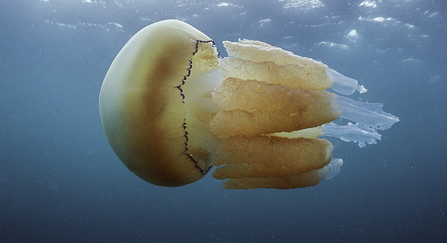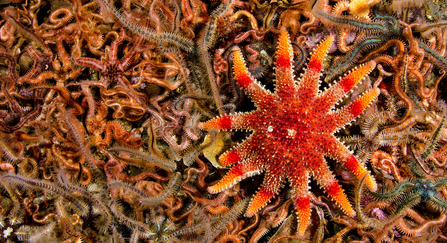Conservationists from around the Irish Sea are looking to turn a tide of inaction to ensure the Irish Sea and all its inhabitants are protected.
While 36 per cent of the Irish Sea is designated as a Marine Protected Area, only approximately five per cent has any management in place and less than 0.01 per cent is fully protected.
The Irish Sea is under significant and increasing pressure from climate change and activities like fishing, aquaculture, development, shipping, aggregates, military activity, recreational activity and pollution.
And while more than 15 million people live around the Irish Sea and many more visit for holidays, only a small percentage of them realise what wildlife lives there and just how important it is for biodiversity and the environment.
Conservationists representing six countries and a number of different organisations – Manx Wildlife Trust, North Wales Wildlife Trust, the North West Wildlife Trusts, Scottish Wildlife Trust, Sustainable Water Network (Ireland), The Wildlife Trust of South and West Wales and Ulster Wildlife – have come together to press for action.
The Irish Sea region is already considered to be in a degraded state. The Irish Sea Network has produced a Review of the Irish Sea 2022 and has laid down their vision and calls to action to protect and improve the health of the Irish Sea.
Head of Marine at the North West Wildlife Trusts, Georgia de Jong Cleyndert says:
“Working together is essential. Wildlife does not adhere to lines drawn on maps, so we need to think at an Irish Sea scale. Whilst there are some protection measures in place for the Irish Sea, management is weak.
“Millions of people around the Irish Sea rely on it for food, employment and wellbeing, but many overlook its role in fighting against climate change and its importance for wildlife – few know about the incredibly diverse habitats that support a huge amount of amazing wildlife – giant basking sharks, leatherback turtles, beautiful starfish and jellyfish, dolphins, porpoises, seal and sharks, as well as internationally important seabirds like Manx shearwater and guillemots”.
Without protection and proper management much of this wildlife faces an uncertain future - pollution, development and destruction of habitat could lead to a severe decline in biodiversity.
The Irish Sea will also be affected by global warming. Blue carbon is the absorption and storage of atmospheric carbon in the marine environment. Oceans store 20-35 per cent of human-made carbon emissions. Blue carbon is stored in the Irish Sea in seagrass, saltmarsh, sediment, shellfish beds and reefs, intertidal sand and mud flats and brittlestar beds. Whilst intact marine ecosystems are effective at sequestering and storing carbon, when marine habitats are damaged they can’t retain as much carbon and may switch from being a carbon store to a carbon source.




